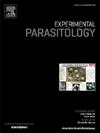Towards effective and efficient machine learning models for schistosomiasis diagnosis in microscopic images
IF 1.4
4区 医学
Q3 PARASITOLOGY
引用次数: 0
Abstract
Schistosomiasis is an infectious disease caused by the parasite Schistosoma mansoni, and it is a significant health concern in many underdeveloped tropical regions. The traditional method of diagnosing schistosomiasis involves fecal examinations under a microscope for parasite eggs, a process that is time consuming, error-prone, and requires specialized training. Artificial intelligence encompasses a broad range of techniques, including both machine learning and its subset, deep learning, which have been successful in solving such problems. Therefore, this study aimed to propose an automated solution that combines DL-based object detection methods with classical ML techniques and HOG feature extraction to identify S. mansoni eggs in images obtained using the Kato-Katz parasitological technique. A real database of 1100 images was created, processed, and annotated by three parasitologists. The proposed system achieved an Average Precision of 0.884 for an @[IoU = 0.50] using a Faster R-CNN method with ResNet-50 architecture over the best-annotated data, outperforming other detection models. Based on a threshold analysis, we suggest an integrated approach with a voting scheme of machine learning models to improve results in terms of false positives and false negatives. Comparative analysis with external data and a commercial tool confirmed that our approach offers promising results and applicability to assist health professionals in diagnosing schistosomiasis in public health systems, such as the Brazilian Unified Health System (SUS), potentially improving diagnosis speed and accuracy in endemic regions.

在显微镜图像中诊断血吸虫病的有效和高效的机器学习模型。
血吸虫病是一种由曼氏血吸虫引起的传染病,在许多欠发达的热带地区是一个重大的卫生问题。诊断血吸虫病的传统方法包括在显微镜下检查粪便中的寄生虫卵,这一过程耗时、容易出错,并且需要专门培训。人工智能涵盖了广泛的技术,包括机器学习及其子集深度学习,深度学习已经成功地解决了这些问题。因此,本研究旨在提出一种将基于dl的目标检测方法与经典ML技术和HOG特征提取相结合的自动化解决方案,以识别使用Kato-Katz寄生虫学技术获得的图像中的mansoni卵。一个由1100张图片组成的真实数据库由三位寄生虫学家创建、处理和注释。该系统在最佳标注数据上使用更快的R-CNN方法和ResNet-50架构,实现了@[IoU=0.50]的平均精度为0.884,优于其他检测模型。基于阈值分析,我们提出了一种与机器学习模型投票方案相结合的方法,以改善假阳性和假阴性的结果。与外部数据和商业工具的比较分析证实,我们的方法提供了有希望的结果和适用性,可帮助卫生专业人员在公共卫生系统(如巴西统一卫生系统(SUS))中诊断血吸虫病,有可能提高流行地区的诊断速度和准确性。
本文章由计算机程序翻译,如有差异,请以英文原文为准。
求助全文
约1分钟内获得全文
求助全文
来源期刊

Experimental parasitology
医学-寄生虫学
CiteScore
3.10
自引率
4.80%
发文量
160
审稿时长
3 months
期刊介绍:
Experimental Parasitology emphasizes modern approaches to parasitology, including molecular biology and immunology. The journal features original research papers on the physiological, metabolic, immunologic, biochemical, nutritional, and chemotherapeutic aspects of parasites and host-parasite relationships.
 求助内容:
求助内容: 应助结果提醒方式:
应助结果提醒方式:


